Fort Sumner – America’s Unfinest Hour?
After visiting White Sands National Monument, I went to Fort Sumner, New Mexico to visit Billy the Kid’s grave and instead found a far more important story, that of Bosque Redondo and the forced ‘Long Walk’ of the Navajos and the confinement of the Mescalero Apaches. It was one of the lowest points in history in terms of the mistreatment of the Indigenous peoples who inhabited the west before the Spanish, the Mexicans and finally the Americans came to take it from them by force in a show of brutality that is scarcely believable today. Bosque Redondo was nothing short of a true ‘concentration camp’ with all the horrors attendant on those words. Here’s why you need to visit and get a better appreciation of why the Navajos and Apaches have a genuine right to feel aggrieved by the way they were treated from 1863-68.
Fort Sumner Today
Fort Sumner today is a very quiet little village of just over 1,000 people on US Highway 60 in south central New Mexico. Perhaps it is best summed up by it’s official webpage where under the heading of Upcoming Events there are none and under the heading What’s New, there is also nothing. What brings most tourists to Fort Sumner is to see the place where Pat Garrett shot and killed Billy the Kid and to see his grave. Nearby is the Billy the Kid Museum. I have to confess that was my principal reason for driving up from Las Cruces as I knew nothing about the events that took place here long before Billy aka William Bonney ever set foot in the area.
Up until 2005 the story of Fort Sumner was largely about the actual fort which stood several miles away the present town on the banks of the Pecos River. Prior to that time, from the tourist’s point of view it was all about the brave men of the U.S. Cavalry lead by the likes of Kit Carson overcoming the ferocious Apache and Navajo warriors who were a menace to a growing nation and its ‘manifest destiny’ to control events in the New World. After that, with the opening of the Bosque Redondo Memorial it became about the truth and what really happened here.
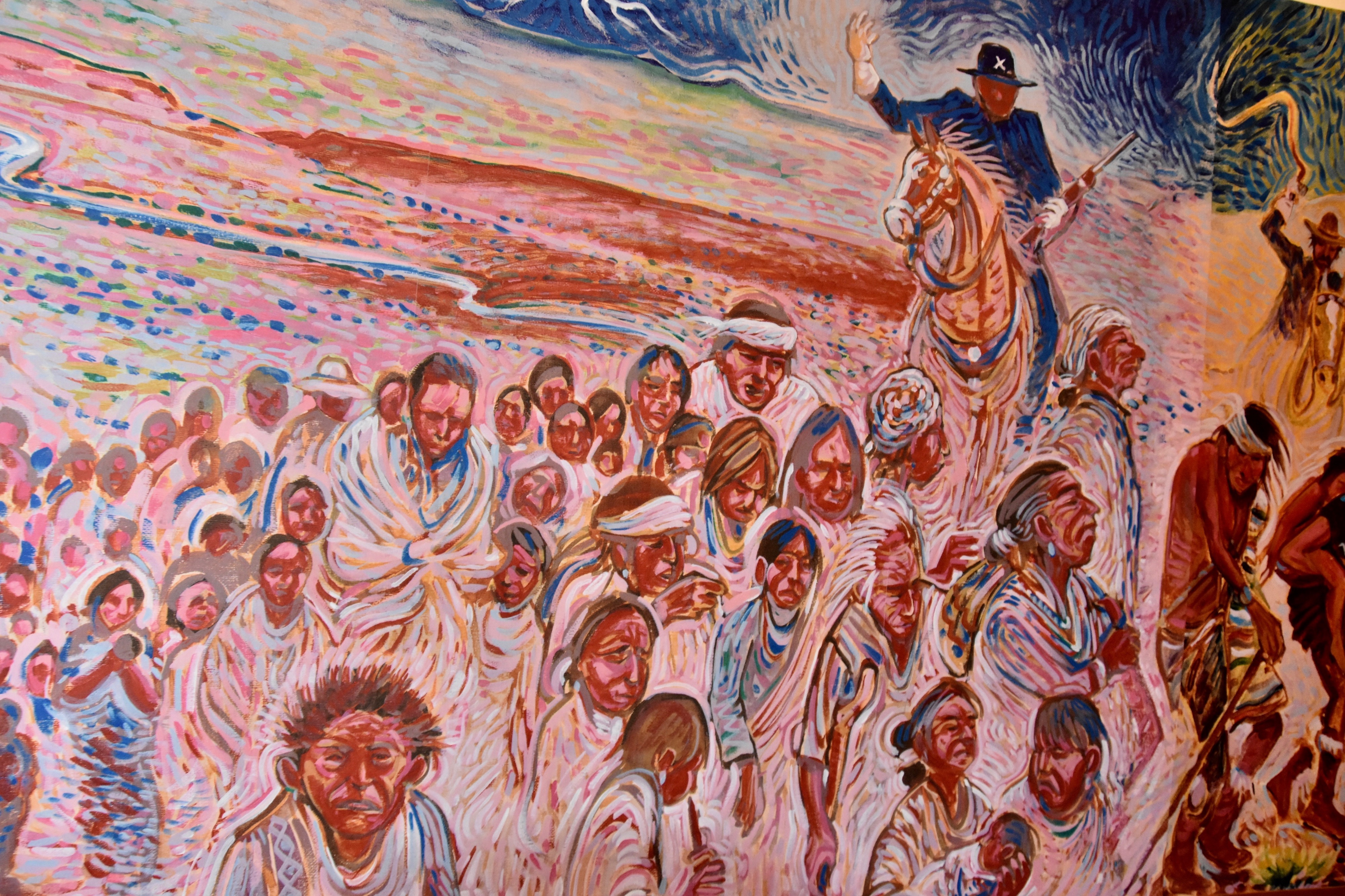
Creation of Bosque Redondo
In 1863 the U.S. was in the midst of the bloodiest war in its history with no guarantees as to whether the Union or the Confederates would come out on top. Although the Civil War was overwhelmingly fought in the east there were battles fought in New Mexico at Valverde which the Confederates won and at Glorieta Pass which the Union won and succeeded in securing New Mexico for the North. These both occurred in 1862 after which there was a sizeable Union army presence in New Mexico with nobody to fight. Since the Americans had seized New Mexico from the Mexicans at the end of the war they started in 1846, a lot of settlers were moving into the territory and simply appropriating land that the Navajos and Mescalero Apaches believed belonged to them. Given the jingoism of ‘Manifest Destiny’, the prejudice against anyone who wasn’t white and the trigger happy sentiments of the military commanders, things were inevitably going to get ugly, very ugly indeed.
In one of the ironies of American history, Abraham Lincoln, a year after the Emancipation Proclamation supposedly freeing the slaves, consented to the establishment of Fort Sumner and the creation of Bosque Redondo, a huge swath of relatively unproductive land, as a reservation upon which to house Mescalero Apaches and later the Navajo. General James Carleton was put in charge of subduing these tribes using whatever means he saw fit. His principal means was legendary Indian fighter and frontiersman Kit Carson whose orders were simply to kill all the men and bring in the women and children, which he did. Faced with total annihilation Chief Cadete persuaded the Mescaleros to surrender and relocate to Bosque Redondo.
Next up were the Navajos who, unlike the Apaches, were agriculturists who inhabited significant chunks of good land in New Mexico and Arizona. Carson unleashed a campaign of terror against them that would have embarrassed the Gestapo for it’s viciousness. Put quite simply, they were given an ultimatum – walk the 400 miles to Bosque Redondo or be exterminated. They decided to walk and the mural above captures the horror of the ‘Long Walk’ that still haunts the Navajo to this day. As a big fan of Tony Hillerman’s Navajo Tribal Police detective novels, there are frequently references to the Long Walk and the lasting effects it has had on the descendants of those who survived to pass on their stories of this American holocaust.
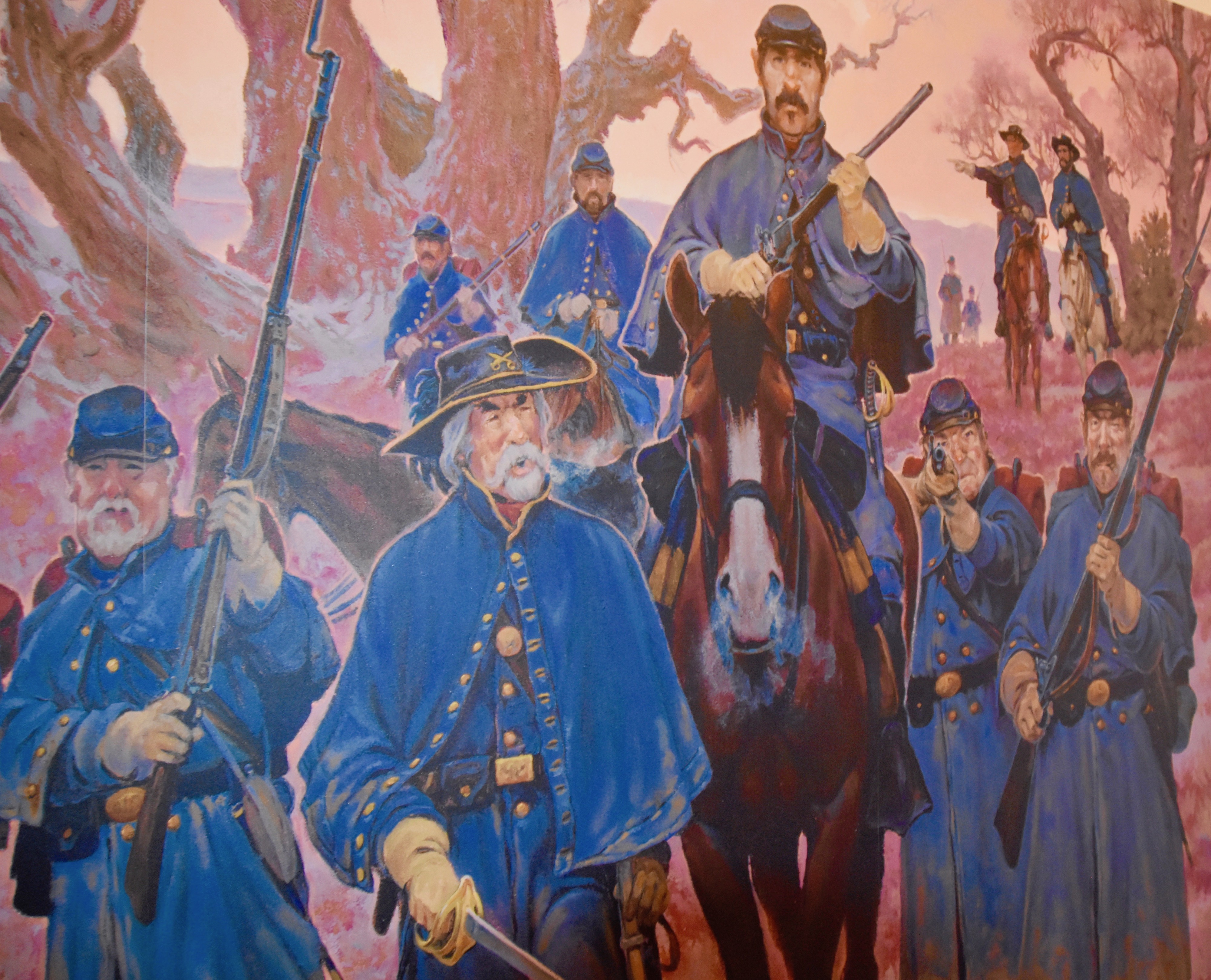
I grew up going to Saturday matinees where the U.S. Cavalry, often led by a John Wayne or Glenn Ford, were unequivocally the good guys and the ‘Indians’ the bad guys who deserved everything the cavalry did to them. This mural shows the other point of view. 11,500 Navajos started out on the Long Walk and only 8,500 made it to Fort Sumner. While some escaped, a greater number were actually sold into slavery, sometimes by the very people who had sworn to protect the liberty of freed black slaves.
Needless to say, the Bosque Redondo experiment was a colossal failure with none of the feeble promises made to the Apaches and Navajo being kept. In 1865 the Apaches snuck out en masse and by scattering in every direction most managed to avoid being recaptured.
The Navajos remained until 1868 when, after Carleton was removed from command, the Navajo Treaty was signed by the Navajo and the U.S. government, recognizing their ancestral homeland as sovereign Navajo territory. The Navajos then made the 400 mile trek back to Arizona and western New Mexico and have been there ever since.
Fort Sumner then fell into a period of somnolence broken only by the Billy the Kid shooting in 1881. Today there is very little evidence of the actual fort with all of the original buildings save one, long gone.
In 1991, a decision was made to build a proper monument to the events that transpired here and in 2005 the Bosque Redondo Memorial was opened and finally the process of reconciliation could get underway.
Visiting Bosque Redondo/Fort Sumner Historic Site
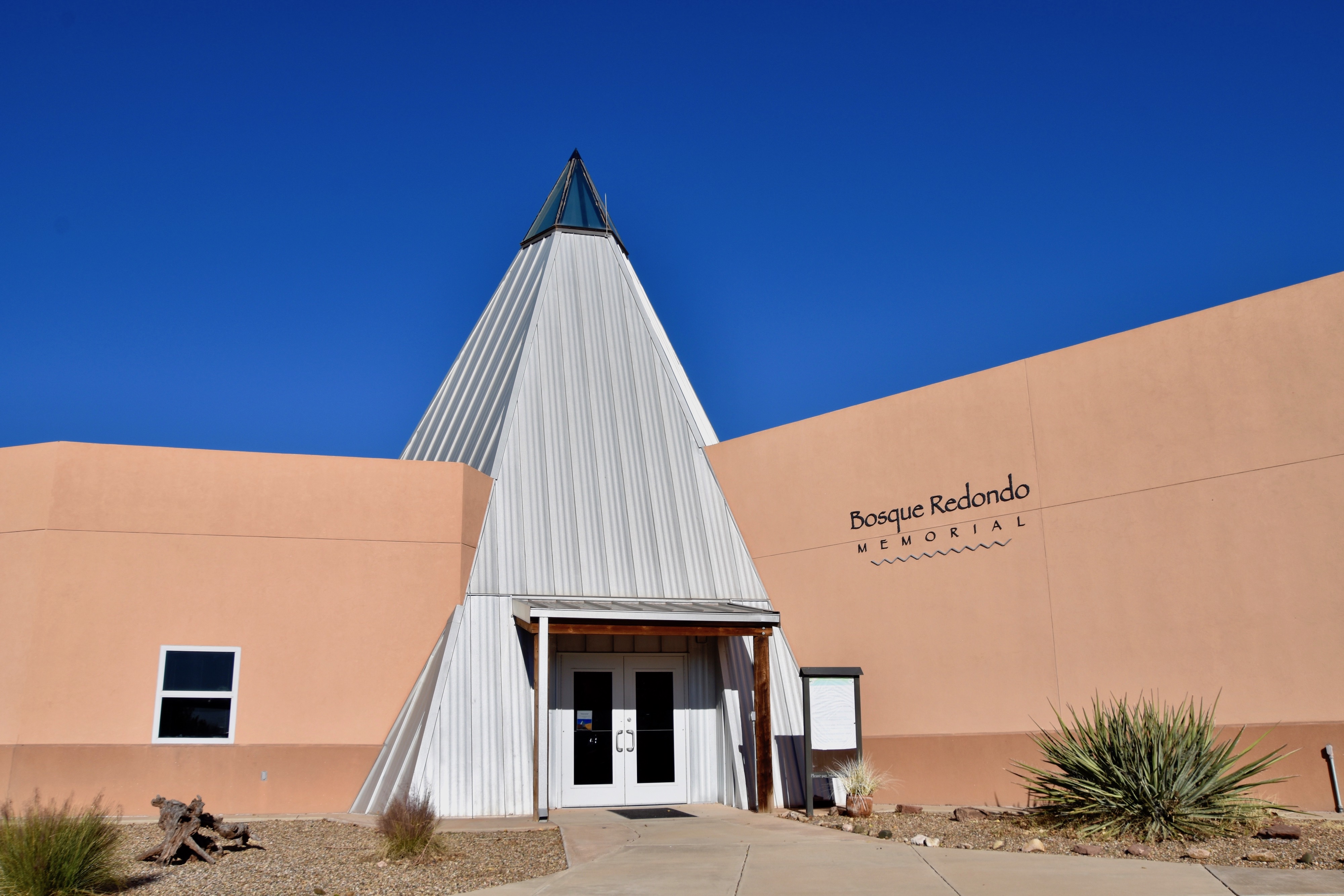
The day I visited Fort Sumner there was virtually nobody else around, either inside or outside the memorial. The design by Navajo architect David Sloan incorporates elements of both Navajo (now referred to as the Diné) and the Mescalero Apache (now referred to as the N’de). The central portion is an N’de tepee while the sides representing a Diné hogan. Admission is free.
The memorial lays out in chronological order, without pulling any punches, the story of Bosque Redondo with the murals being the highlight of the visit.
This is a drawing of General Carleton giving the orders to Kit Carson to suppress the Mescalero Apaches with Abraham Lincoln looking on.
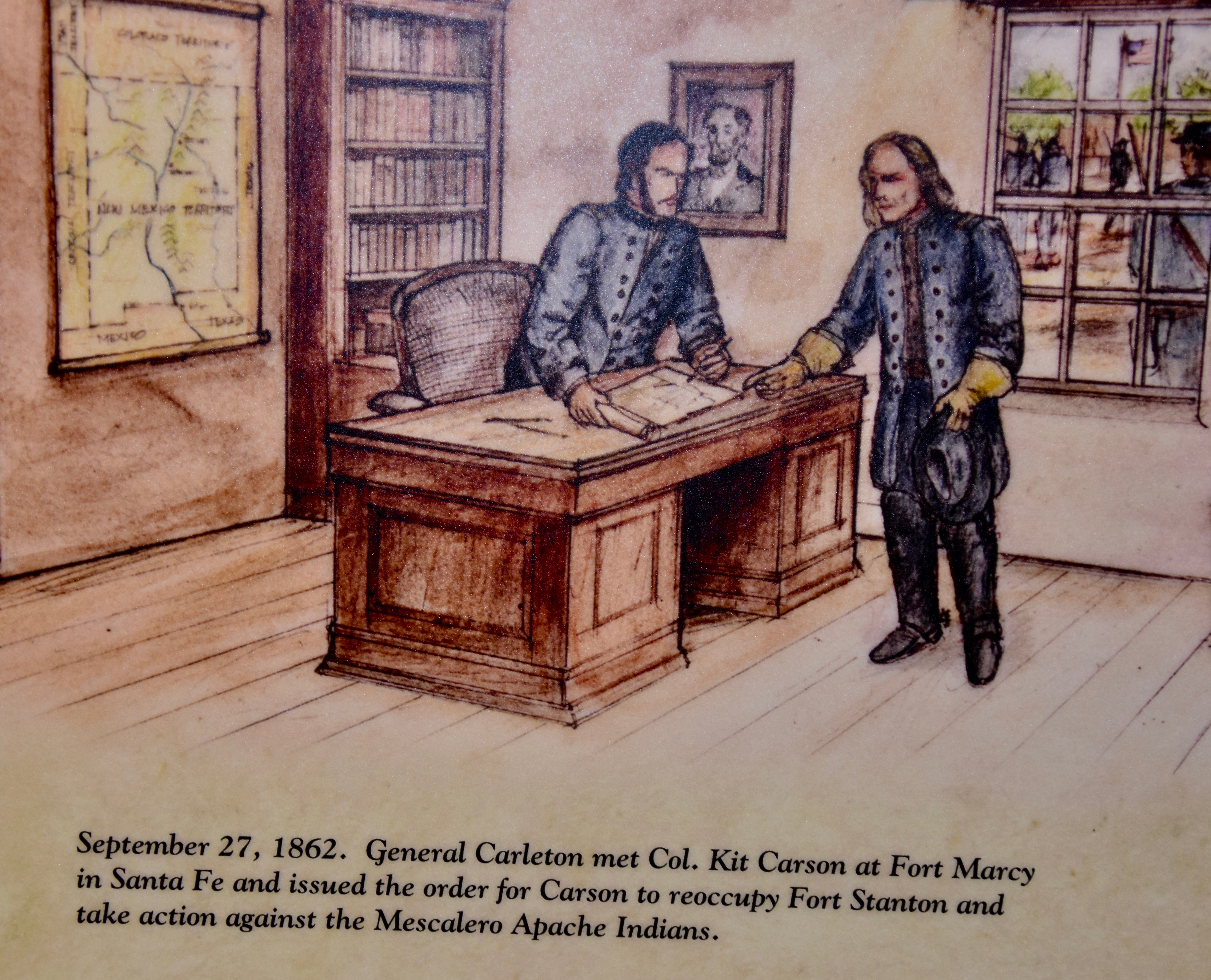
After touring the memorial you go out the back door to walk the grounds starting with Treaty Rock where the 1868 treaty was signed and Diné still leave stones commemorating the occasion.

A trail leads to the foundations of Fort Sumner.
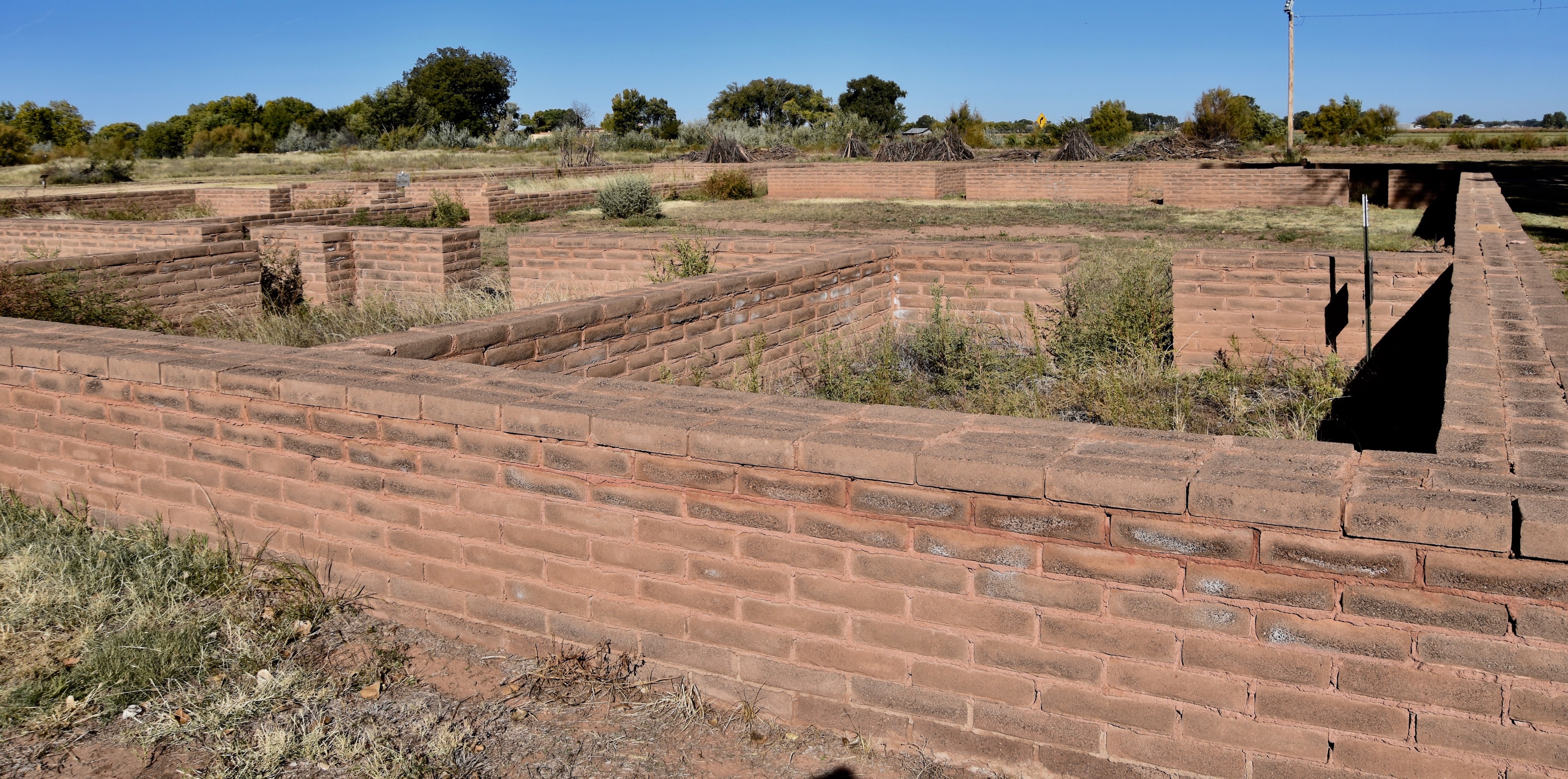
This is the only building still remaining from the original fort, a portion of the barracks. Before the Bosque Redondo Memorial was built it was the cavalry’s side of events that were the most prominent feature of a visit to Fort Sumner. Now the men who occupied these beds don’t quite seem to be the heroes they were once portrayed to be.
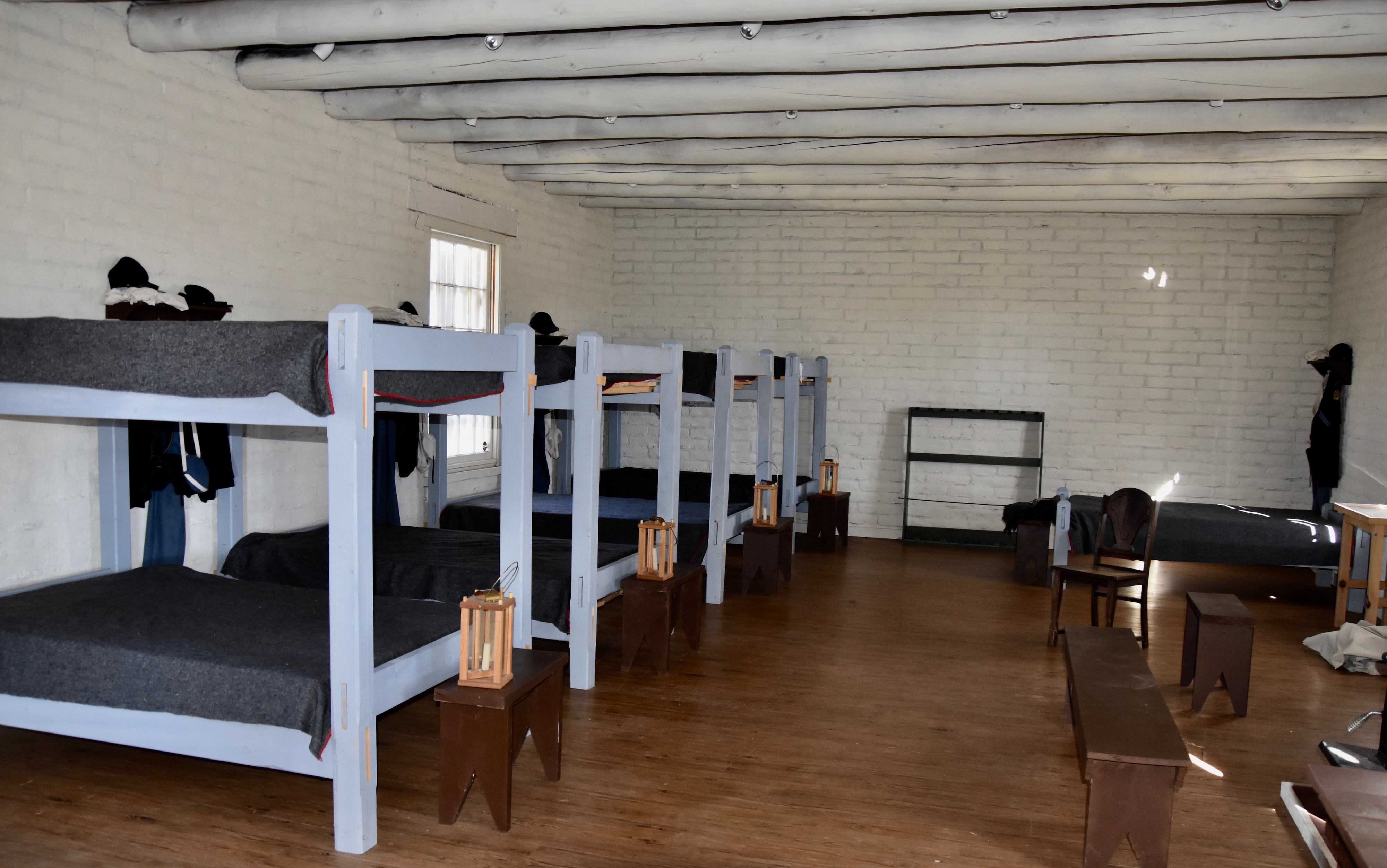
Billy the Kid at Fort Sumner
The Lincoln County War was the worst range war in United State’s history and involved a number of famous characters including Henry McClarty aka William Bonney aka Billy the Kid. Alison and I visited Lincoln, which is almost a ghost town today and I will be writing a post about the events that took place there in 1881 including the killing of two sheriff’s deputies by Bonney during his escape from jail there. He fled to Fort Sumner and there on July 14 inside the house of land baron Lucien Maxwell he was killed by Sheriff Pat Garrett in circumstances still under dispute.
The house is long gone, but there is a picture of it on site.
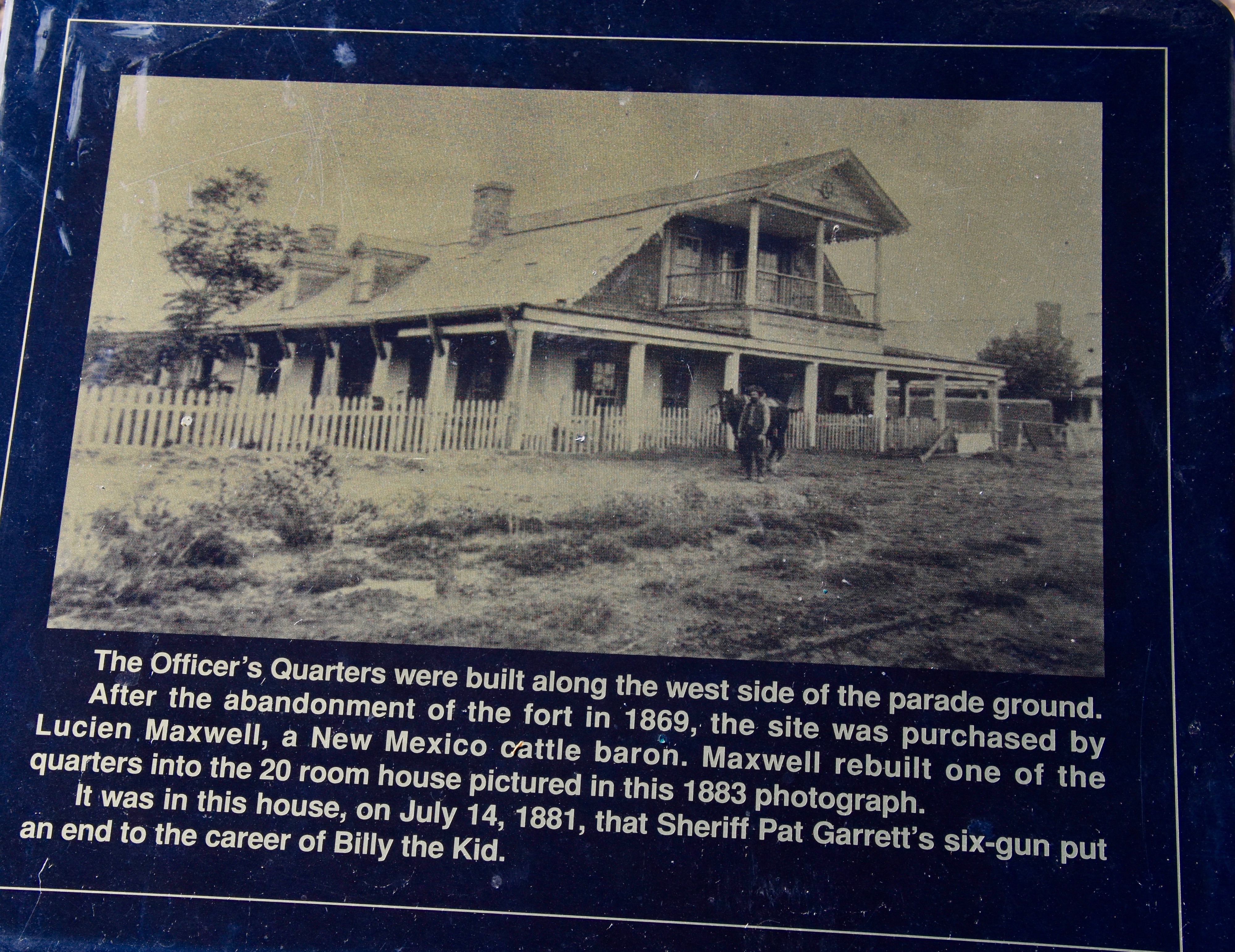
The very spot where The Kid died is identified by this marker. As you can see people still place coins on the spot, although God knows why.
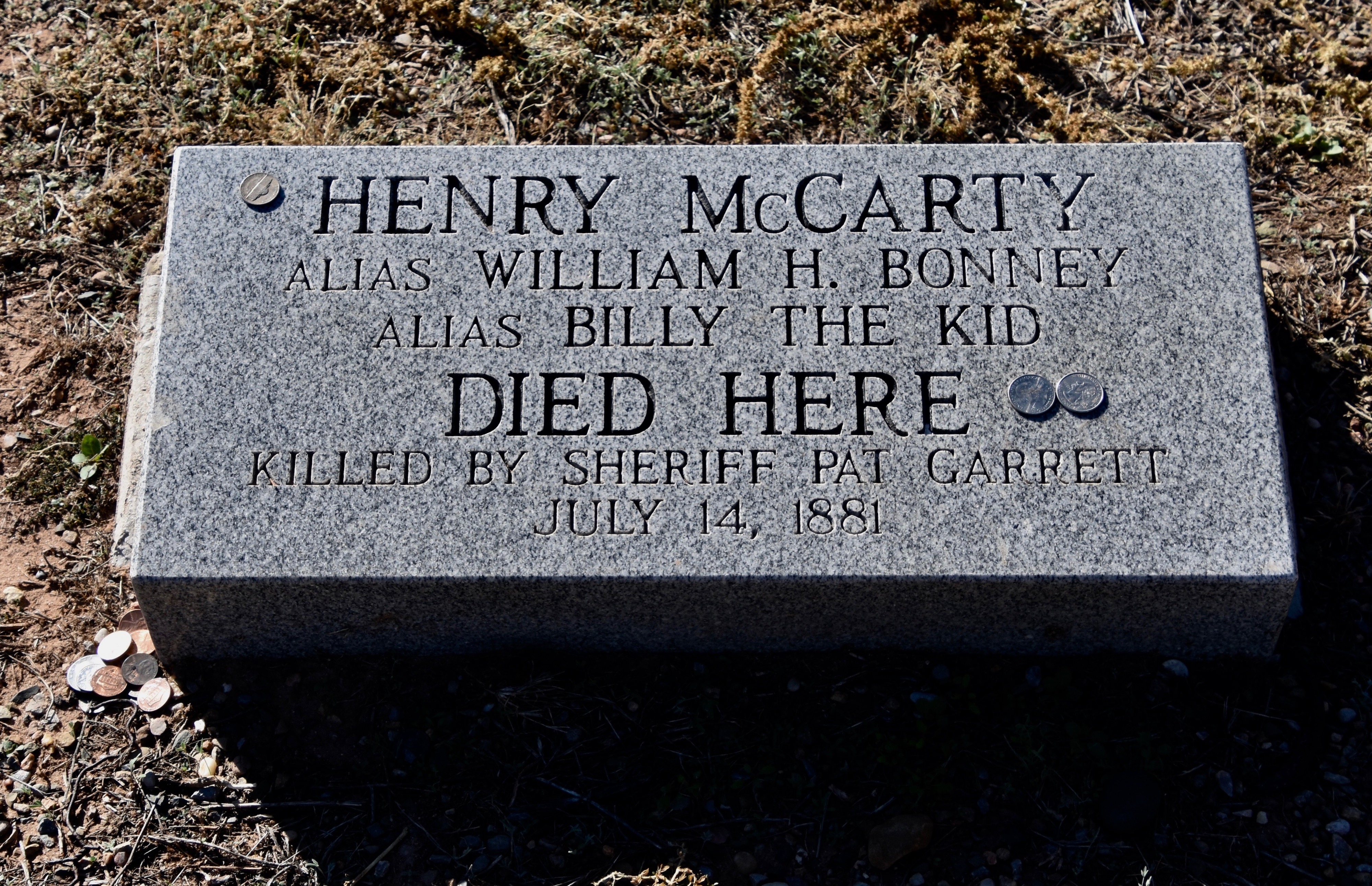
Nearby is the small cemetery where not only is Billy buried, but some of his friends and at least one other person he killed, Joe Grant who he shot in a Fort Sumner saloon.
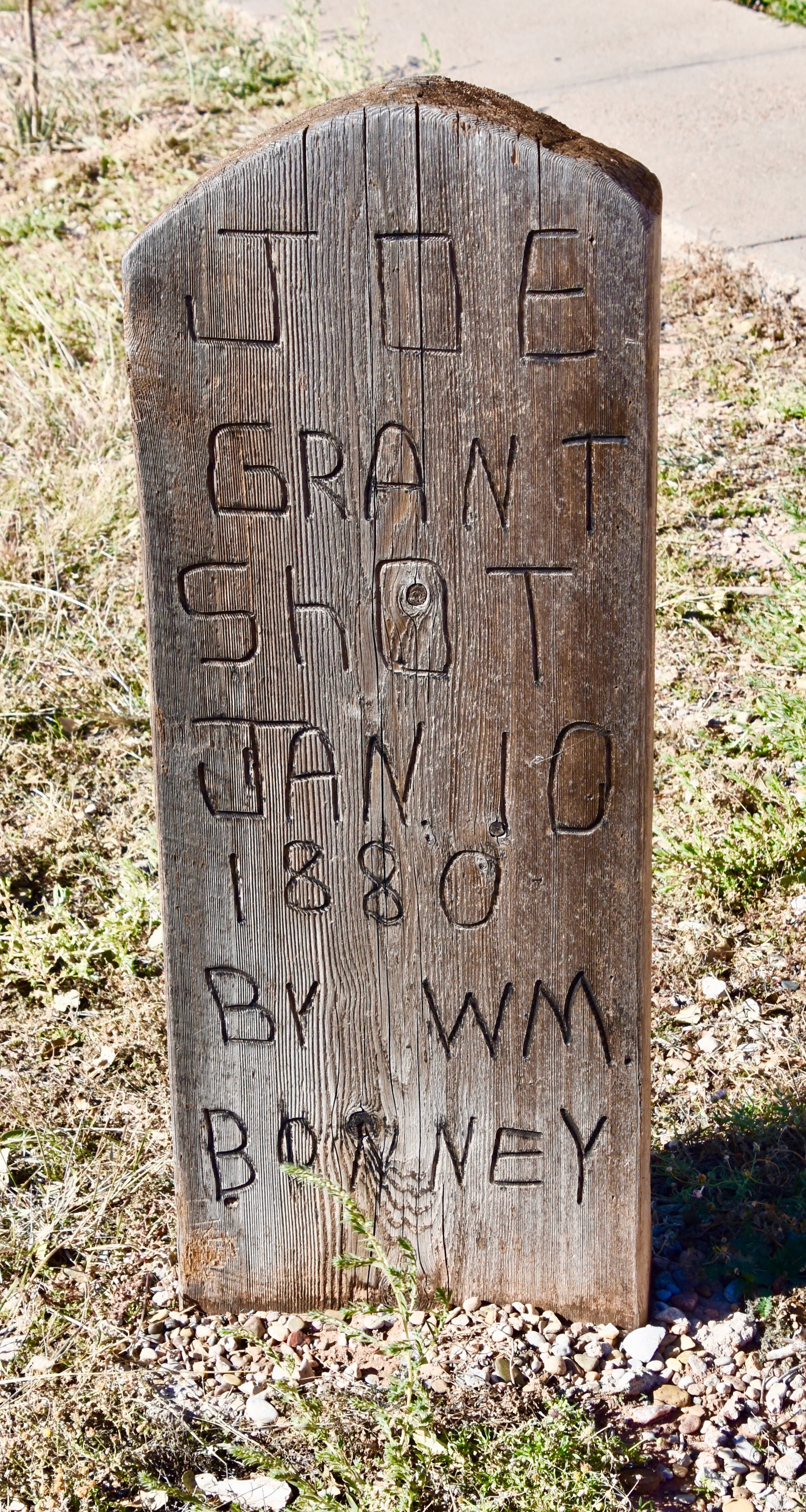
The Kid’s grave has been vandalized and stolen in the past so he’s now behind bars, something it was very hard to do during his lifetime. He is buried alongside two other members of his ‘gang’ that were also killed by Pat Garrett’s men during the course of trying to capture their leader, Tom O’Folliard and Charlie Bowdre. The grave marker with the word “Pals” on top wasn’t made until 1931.
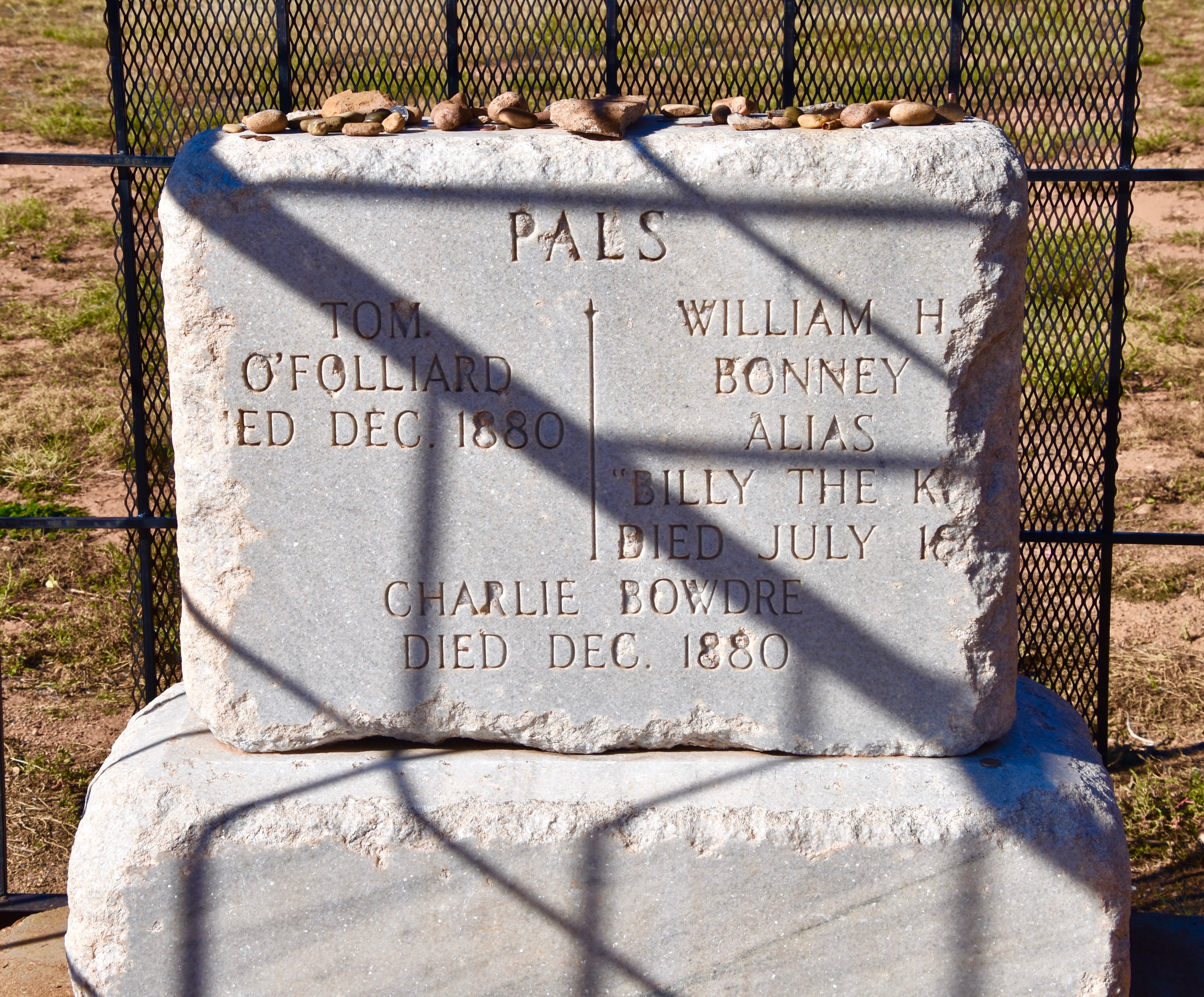
Something’s not quite right when more people come to Fort Sumner to see the place were a murderous little bastard was killed and buried, than to learn the truth about a true American concentration camp.
I’ll close this post with reference to the International Sites of Conscience an organization I was not aware of before visiting Bosque Redondo. Founded only in 1999, it is a coalition of sites around the world whose goal is to promote human rights and justice in today’s world by educating ourselves about places where violations of these rights and grave injustices occurred in the past. That’s a noble goal and one that we can only hope has some success in preventing things like a Bosque Redondo in the future.


